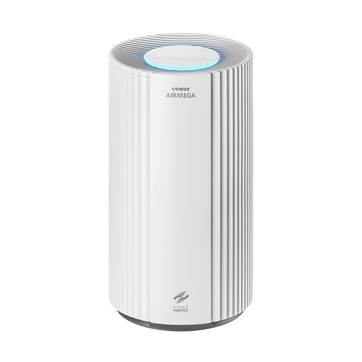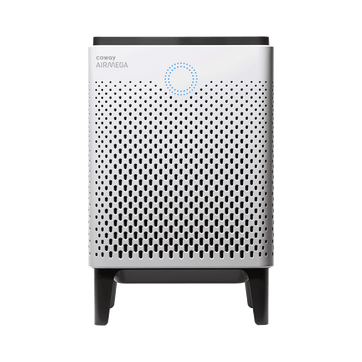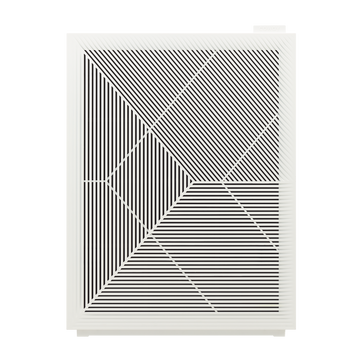
What is a HEPA filter?
Think about the long list of important terms, buzzwords, and acronyms in your life that you haven’t quite wrapped your brain around: FDIC-insured, Big Data, Organic, to name a few. If you’ve ever bought an air purifier or vacuum, you can probably add “HEPA” to that list.
What does it mean for a filter to be called “HEPA”, and why does it matter? We’re happy to explain:
What does HEPA mean and where did it come from?
HEPA, which stands for High Efficiency Particulate Air, is a designation used to describe filters that are able to trap 99.97 percent of particles that are 0.3 microns. Though the HEPA standard and certification process wasn’t established until 1983, development of HEPA filters dates back to World War II, when American scientists with the Manhattan Project created the first HEPA filter to capture radioactive particles released during the creation of the atomic bomb.
Why 0.3 microns?
That micron size (0.3) is referred to by scientists as the MPPS, or the most penetrating particle size. Scientists have found that particles of that size evade air filters more than larger or smaller particles. We’ll get into why in a little bit.
What are HEPA filters made from and how do they work?
Most modern HEPA filters consist of interlaced glass fibers that are twisted and turned in myriad directions to create a fibrous maze. As particles traverse this web, they’re taken out of circulation in the following ways:

Direct Impaction: Large contaminants, such as certain types of dust, mould, and pollen, travel in a straight path, collide with a fiber, and stick to it.
Sieving: The air stream carries a particle between two fibers, but the particle is larger than the gap, so it becomes ensnared.
Interception: Airflow is nimble enough to reroute around fibers, but, thanks to inertia, particles continue on their path and stick to the sides of fibers.
Diffusion: Small, ultrafine particles move more erratically than larger ones, so they’re more likely to hit and stick to fibers.
What about when particles penetrate a HEPA filter? Are they going straight to my lungs?
Don’t worry. There are other technologies that work in concert with HEPA filters to ward off many super-small contaminants, such as smoke, fumes, and other chemicals. Activated carbon filters, like those in Airmega’s Max2 filters for example, use small pores to capture some chemicals, odours, and smoke that a HEPA filter might not catch.
I keep hearing the term 'True HEPA.' Are there different forms of HEPA?
There are quite a few terms marketers use to describe air filters. While True HEPA is technically a marketing term, it’s used by many to differentiate between American and European HEPA standards. In Europe, a filter only needs to capture 85 percent of particles sized at 0.3 microns—compared to the 99.97-percent U.S. standard—to be HEPA-certified. The American standard is, thus, often referred to as “True HEPA.” “HEPA-type,” “Ultra HEPA,” and other HEPA variations aren’t recognized by the accrediting bodies in the U.S. or Europe.
What if a filter advertises itself as capable of capturing 99.9 percent of small or large particles—that’s good, right?
Not necessarily. A filter that says it can suck up 99.9 percent of large particles may be poor at capturing ultra-fine ones. Likewise, a filter that touts its ability to trap the smallest of particles isn’t telling you how well it captures particles that are 0.3 microns, which we know are the most troublesome.
Where are HEPA filters used?
Like in the Manhattan Project, HEPA filters were originally intended to be used in lab and factory settings. Today, they’ve also made their way into consumer products, including cars, vacuum cleaners, and—you guessed it—air purifiers.
Learn more about how Airmega is changing the way we breathe, and stay up to date on the latest news by signing up for our newsletter.
Disclaimers
1Coway air purifiers has been proven to trap dust, pollen, dander, viruses and bacteria in the air based on KCL (Korea Conformity Laboratories) testing.They have been tested in a 30㎥ size chamber according to the Korea Air Cleaning Association standard (SPS-KACA 002-132:2022 Modified) to measure the 0.01㎛ size of particle removal rate. It was tested on maximum airflow speed in normal room temperature and humidity conditions. The performance may vary in the actual living environment of customers.
→ Tested with Airmega Aim, 150, 160, AP-1216L, AP-1512HH, AP-1512HHS, 200M, Icon, IconS, 230, 240, 250, 250 Art, 250S, 300, 300S, 400, 400S, ProX
299.97% of viruses, bacteria, fungi and pollen were verified to be removed from the air for Coway air purifiers which have Green True HEPA™ filter applied based on the Japan Food Research Laboratories(JFRL) testing according to JEM 1467 standard.
→ Tested with Coway Airmega AP-1512HH, AP-1512HHS, 250, 250 Art, 250S, 300, 300S, 400, 400S
→ All tested by JFRL and received above result within below time.
All tested by JFRL and received above result within below time.
- Virus: Tested with Escherichia coli phage ΦX174 NBRC 103405, 60 minutes
- Bacteria: Tested with Staphylococcus epidermidis NBRC 12993, 60 minutes
- Fungi/Mold: Tested with Penicillium citrinum NBRC 6352, 60 minutes
- Pollen: Tested with Cedar Pollen extract, 60 minutes
3Aerosol test conducted in a Biosafety level 3 laboratory with two Coway air purifier models, Coway Airmega 250 and 400 for removal of SARS-CoV-2 Aerosol by US based MRI Global, a not-for-profit laboratory and partner of US Department of Defense. The test was conducted in a 13.1ft3 chamber. Virus was aerosolized for 15 minutes and the product was turned on high for 2 minutes. Result showed each product effectively removed over 99.98% of the SARS-CoV-2 in 2 minutes. This is a result from a laboratory experiment condition and result may vary in different conditions. This result does not imply it kills SARS-CoV-2 or prevents the transmission of Covid-19. Coway Airmega 250S and 400S are identical to the tested models and has equal performance with an additional mobile connectivity function.
4The concentration of ammonia, acetaldehyde and acetic acid were proven to be removed within 30 minutes by FCG Research Institute, Inc. Human Life Science Lab. It is not a demonstration result in the actual use space. Not all odors and gases may be supported. → Tested with Coway Airmega 150, 160, AP-1512HH, AP-1512HHS, 400, 400S
5The coverage area of the air purifier is based on an area where the air cleaner can make two air changes per hour (ACPH). An air change per hour translates to how many times an air purifier can clean an area, assuming the height of a ceiling to be 8 ft, in one hour. Therefore ** means two air changes per hour means that the cleaner can clean the area once every 30 minutes and * means air changes per hour means that the air purifier can clean the area once every 60 minutes.
10Terms and conditions apply. Discounts, including promotions, coupons, bundle discount and subscription discount, cannot be stacked on top of other coupons. During promotional periods, discount codes will not be able to be applied to orders. Promo codes may apply to products only—filters, accessories, and new products within 3 months of the release date are not included.




















